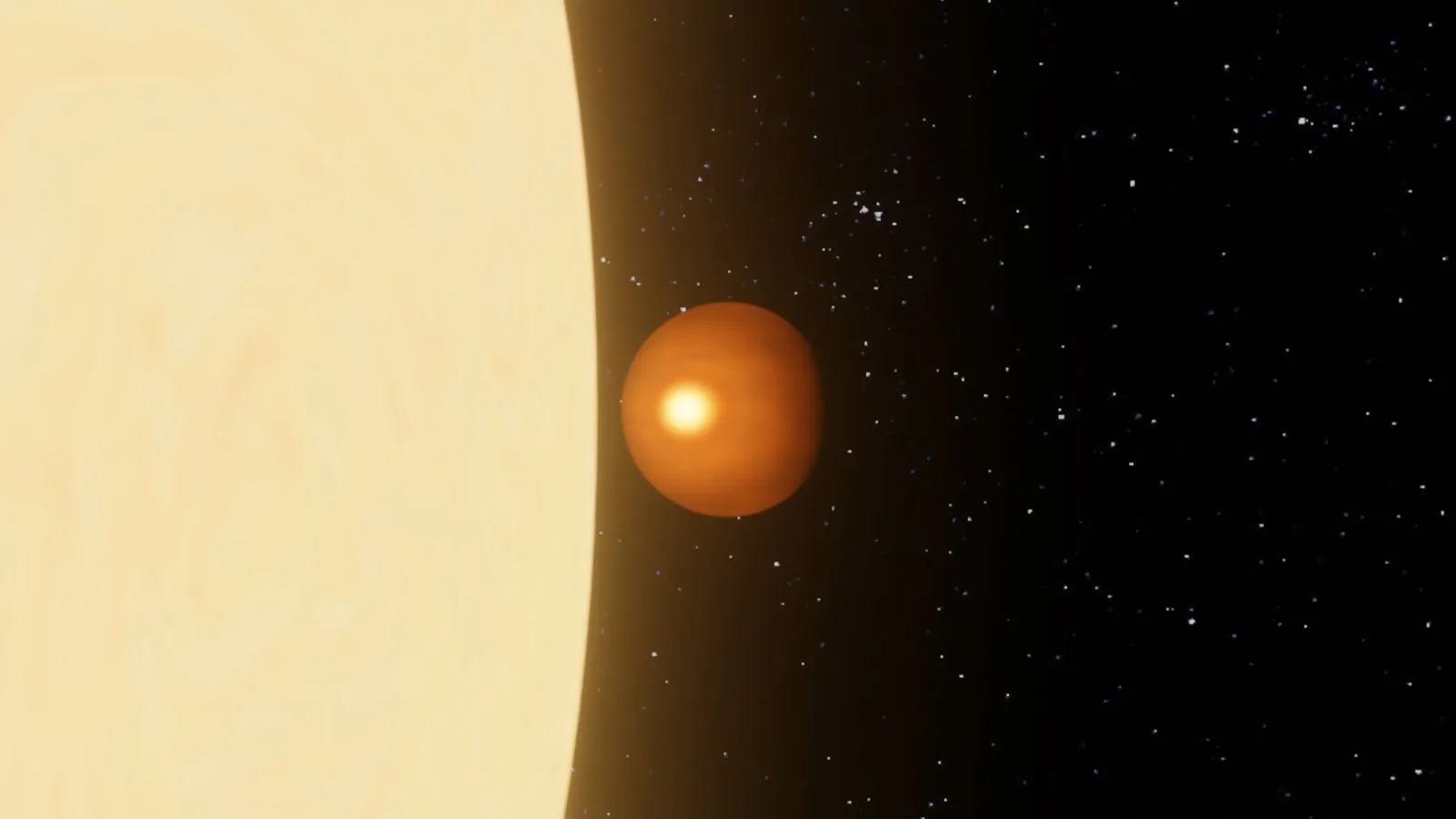Follow us on Google News (click on ☆)
This planet with its extreme conditions - temperatures exceeding 2000 degrees Celsius (over 3600°F) - is a prime target for researchers, who have been dissecting every physical mechanism at work in its atmosphere for several years. For example, a "rainbow" was detected there last April (see our article).
The discovery of iron winds sweeping across the dayside of the planet offers new insights into its complex climate dynamics. These results can be found in the journal Astronomy & Astrophysics.

WASP-76 b has been the subject of numerous studies since its discovery in 2013. Temperatures there reach 2400 degrees Celsius (about 4350°F).
© Tania Cunha (Planetário do Porto - Centro Ciência Viva/Instituto de Astrofísica e Ciências do Espaço)
The ultra-hot exoplanet WASP-76 b has been extensively studied since its discovery in 2013, revealing numerous extreme atmospheric phenomena.
Previous research led by international teams, including those from UNIGE, identified iron rains on its nightside, the presence of barium in its upper atmosphere, and even a "rainbow" at the boundary between its day and night sides.
"Research on WASP-76 b shows us how extreme atmospheric conditions can be on ultra-hot Jupiters," explains David Ehrenreich, Associate Professor at the Department of Astronomy at UNIGE's Faculty of Sciences, member of PRN PlanetS, and co-author of the study. "In-depth analysis of this type of planet provides us with valuable information to better understand planetary climates as a whole."
Flow of iron atoms
For this new study, the astronomy team focused on the dayside of WASP-76 b, where temperatures reach 2400 degrees Celsius (about 4350°F), observing it at high spectral resolution in the visible light spectrum. The main result is the detection of a flow of iron atoms moving from the lower to the upper layers of the planet's atmosphere.
"This is the first time that such detailed optical observations have been made of the dayside of this exoplanet, providing essential data about its atmospheric structure," explains Ana Rita Costa Silva, a PhD student at the Instituto de Astrofísica e Ciências do Espaço (IA, Portugal), visiting for an extended period at the Department of Astronomy at UNIGE's Faculty of Science, and first author of the study. "Our observations indicate the presence of strong iron winds, likely driven by a hotspot in the atmosphere."
Thanks to the ESPRESSO spectrograph
This breakthrough was made possible by the ESPRESSO spectrograph, an instrument renowned for its precision and stability.
Built largely by UNIGE and installed on ESO's Very Large Telescope (VLT) in Chile, it enabled high-resolution spectral observations of the planet. By analyzing this light, the team was able to identify the chemical signatures of moving iron in the atmosphere. This technique, known as high-resolution emission spectroscopy, is particularly powerful for studying exoplanet atmospheres.
"The ability of ESPRESSO to make such precise measurements is crucial," says Christophe Lovis, Associate Professor at the Department of Astronomy at UNIGE's Faculty of Science, member of PRN PlanetS, and co-author of the study. "This level of precision allows us to explore dynamic processes in exoplanet atmospheres like WASP-76 b with unprecedented detail."
A window into exoplanet climates
The successive discoveries on WASP-76 b pave the way for a better understanding of exoplanet climates, particularly on gas giants subjected to extreme irradiation from their host stars. The detailed mapping of atmospheric winds and their chemical composition helps astronomers develop a comprehensive model of the evolution of these distant worlds.
By detecting iron winds on WASP-76 b, scientists are providing crucial new information in building 3D models of this exoplanet's climate, which could one day allow them to predict similar phenomena on other distant planets.